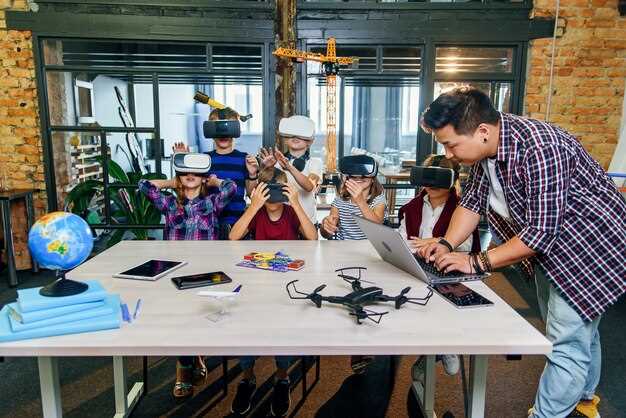Try embracing virtual reality (VR) in educational settings. Schools and universities find VR training a valuable tool, offering immersive experiences that enhance student engagement and retention. A study by PwC highlights that students in VR environments learn four times faster than in traditional classrooms. This gives educators an unprecedented opportunity to tailor lessons to individual needs, thus fostering a deeper understanding of complex subjects.
Incorporating VR in education can transform how students engage with subjects like history, science, and literature. For example, VR enables students to step into a historical event or explore the molecular structure of DNA, granting first-hand understanding without leaving the classroom. Importantly, research from Stanford University suggests VR-based lessons increase empathy and awareness, paving the way for more socially conscious learners.
Educational institutions should consider cost-effective solutions for VR implementation. Google Expeditions and affordable VR headsets like Oculus Quest 2 allow schools to bring this technology into classrooms without significant financial burdens. Studies show that even low-budget VR setups can significantly enhance learning outcomes.
Explore partnerships with tech companies for developing bespoke educational VR content. Tailor-made programs can address specific curriculum needs, assisting teachers in creating more engaging lesson plans. The collaboration between education and technology sectors ensures content stays relevant and impactful.
Exploring Virtual Reality Training in Education
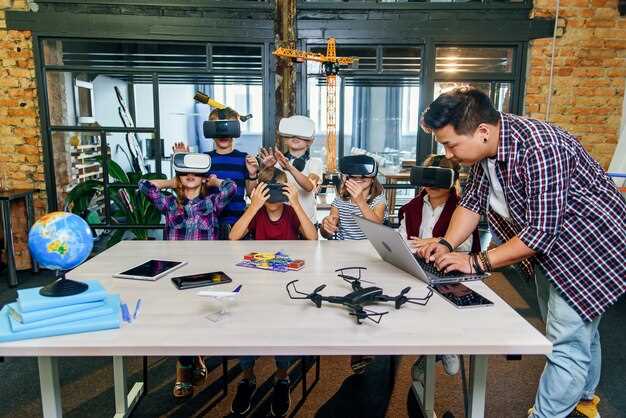
Incorporate virtual reality (VR) into the curriculum to enhance student engagement and retention. By implementing VR simulations, students gain practical experience without leaving the classroom. For example, medical students can practice complex surgeries through VR, allowing for unlimited repetitions in a risk-free environment.
Integrate VR into language learning to provide immersive environments where students converse in different cultures and dialects. This real-world interaction accelerates language acquisition compared to traditional methods.
Utilize VR for history lessons by transporting students to significant historical events. This dynamic learning approach fosters critical thinking by allowing students to witness events in an interactive manner, encouraging a deeper understanding of historical contexts.
Implement collaborative VR projects in science classes to stimulate teamwork and problem-solving skills. Virtual labs enable students to perform experiments collaboratively, leading to an enriched learning experience without physical resource constraints.
Ensure the accessibility of VR technology by selecting cost-effective and user-friendly devices. Leverage platforms that offer a wide range of educational VR content to broaden the curriculum’s scope without extensive development costs.
Implementing Virtual Reality in Classroom Settings

Equip the classroom with virtual reality headsets and accompanying software, ensuring that both teachers and students receive adequate training to operate them effectively. Begin by selecting VR applications that align with the curriculum, such as history simulations to vividly illustrate key historical events or biology apps that allow students to explore the anatomy of the human body in 3D.
- Select a reliable VR platform and ensure compatibility with existing classroom technology.
- Schedule regular training sessions for teachers to improve their proficiency in VR tools and applications.
- Integrate VR content that directly supports the curriculum, ensuring that it enhances rather than replaces traditional learning methods.
Allocate specific time slots for VR sessions to maintain a balanced educational experience. Assess the effectiveness of VR learning through feedback from students, encouraging them to share their experiences and insights. Adjust the VR content and teaching strategies based on this feedback to continually improve the learning environment.
- Designate VR days or sessions within the regular timetable to build anticipation and maintain structure.
- Encourage students to work collaboratively on VR projects to enhance their teamwork skills.
- Collect post-session surveys to evaluate student engagement and learning outcomes.
Look for opportunities to blend VR with other learning modalities, such as project-based learning or flipped classroom models, to provide a holistic and immersive educational experience. Integrating VR in such innovative ways can capture students’ imagination and deepen their understanding of complex subjects.
Choosing Suitable VR Technologies for Different Educational Levels
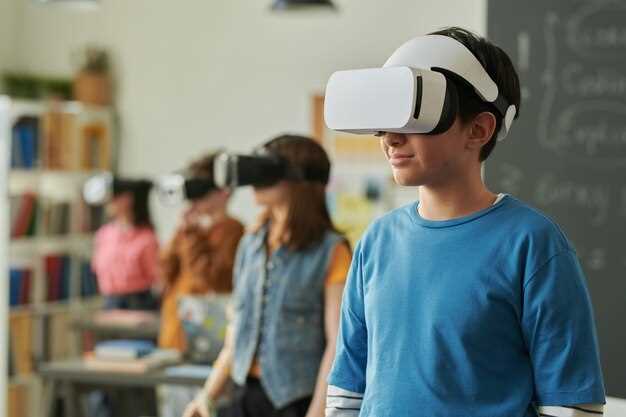
Begin with assessing the age and cognitive development of students. For early childhood education, prioritize VR technologies that support immersive play-based learning. Platforms like Oculus Quest offer simple, interactive experiences that cater to young learners, providing simulations that improve motor skills and understanding of basic concepts through captivating visuals and activities.
In contrast, middle school students require VR experiences that develop critical thinking and problem-solving skills. Opt for solutions incorporating story-driven simulations, such as ClassVR, where students can participate in virtual historical events or conduct safe science experiments, fostering engagement and deeper learning.
As for secondary education, leverage VR for more complex, subject-specific tasks. Choose platforms like zSpace, which allow high school students to explore advanced science modules, such as anatomy or astronomical phenomena. Emphasize using VR to simulate lab work or field experiences, giving students real-world context without geographical or physical constraints.
In higher education, focus on precision and analytical application. Technologies like HTC Vive Pro suit university-level courses requiring high-resolution, intricate simulations–ideal for fields such as medicine, engineering, and architecture. Facilitate professional skills development by integrating industry-standard VR applications, preparing students for their respective careers effectively.
Discuss how to select appropriate VR hardware and software for elementary, secondary, and higher education.
Identify the specific educational goals and experiences you wish to offer through VR in your educational setting. For elementary schools, focus on simple and easy-to-use systems that provide immersive experiences while ensuring the safety and comfort of young learners. Look for durable hardware with adjustable head straps and select software that prioritizes engaging storytelling and basic interactive learning modules, like virtual field trips or basic science simulations.
For secondary education, choose VR possibilities that introduce more complex subjects and promote critical thinking. Consider VR headsets that support detailed 3D modeling and simulations, allowing students to explore intricate subjects like chemistry, physics, or history. Software should provide a more interactive experience catering to these needs, offering modules that challenge students’ problem-solving skills and encourage collaborative projects.
When selecting VR hardware and software for higher education, prioritize systems that offer cutting-edge technology like high-resolution displays and advanced tracking capabilities. VR can effectively simulate real-world environments necessary for advanced subjects such as medical, engineering, or architectural studies. Software should provide comprehensive simulations and opportunities for in-depth research, analysis, and professional skill development. Additionally, ensure compatibility with existing university systems for seamless integration and usage.
Consider budget constraints at every level of education. Look for scalable VR solutions that offer long-term value while meeting educational requirements. Vendor support and regular software updates also play a significant role in maintaining the relevance and functionality of VR systems. Engage with educators and IT professionals during the selection process to ensure the chosen solutions align well with the educational goals and technical infrastructure of your institution.
Integrating VR into Existing Curriculums
Begin by identifying subjects where traditional teaching methods struggle to convey complex concepts. VR excels in this area by offering a three-dimensional understanding and immersive experiences. Subjects like biology, history, and engineering benefit greatly from VR simulations.
- Introduce VR modules progressively, starting with one or two pilot programs. For instance, a virtual tour of ancient civilizations in history classes can help test its impact before wider adoption.
- Collaborate with VR experts and educators to tailor VR content that directly aligns with your curriculum’s learning objectives. This ensures that VR enhances learning outcomes rather than serving as a standalone tool.
- Equip teachers with VR training workshops. A well-informed educator can guide students effectively, enhancing the learning experience. Regular professional development sessions will keep staff updated on technological advances and best practices.
- Adjust class schedules to accommodate VR sessions. Given the setup and immersion time needed, it’s beneficial to have dedicated slots that allow full engagement without cutting into other subjects.
- Encourage interdisciplinary projects using VR. Students can collaborate across subjects, such as combining physics and art to create a virtual design project, fostering a deeper understanding and application of knowledge.
- Implement regular feedback mechanisms involving students and educators to assess the integration’s success and areas for improvement. Surveys and discussion forums can provide valuable insights for refining VR use.
Budget considerations are crucial. Leverage grants, partnerships with tech companies, or bulk purchasing agreements to make the inclusion of VR financially viable. Explore options for shared devices across schools or departments to maximize resources.
By thoughtfully integrating VR, schools can enhance educational experiences and keep students engaged with modern learning techniques. This approach not only makes learning more interactive but also prepares students for a technology-driven future.
Provide strategies for incorporating VR modules into current teaching plans and lesson structures.
Develop a clear alignment between VR content and existing curriculum goals by analyzing subjects where VR can add depth or clarity. For subjects like science or history, VR can create immersive experiences that are hard to replicate with traditional methods.
Integrate VR modules in a step-by-step manner. Begin by identifying lessons that benefit most from a VR experience, such as complex phenomena or historical events. Prioritize incorporating these modules into plans where they have the most significant impact.
Encourage collaboration among teachers to share VR resources and experiences, which not only saves time but also expands the range of available content. Form a team to regularly evaluate the effectiveness of VR in achieving educational objectives, ensuring that its use is intentional and beneficial.
Utilize platforms and tools that allow for easy VR integration. Opt for software compatible with existing school technology to minimize technical hurdles. Ensure software updates are manageable within the academic calendar.
Design lesson plans with flexibility to accommodate VR. Allow time for students to explore virtual environments and include interactive tasks that require critical thinking and engagement, ensuring that VR is not just an add-on but an integral part of the learning process.
Regularly gather student feedback on their VR experiences to inform future planning. Create a feedback loop where students can share insights on what worked and what could be improved. This not only refines VR usage but enhances student involvement in their own learning journey.
| Key Strategy | Description |
|---|---|
| Curriculum Alignment | Ensure VR aligns with and enhances current educational objectives. |
| Collaborative Resource Sharing | Foster a collaborative environment among educators for resource sharing. |
| Tool Compatibility | Choose VR tools that integrate seamlessly with existing infrastructure. |
| Flexible Planning | Create adaptable lesson structures to incorporate VR effectively. |
| Student Feedback | Incorporate student insights to continually improve VR integration. |
Training Educators to Leverage VR Tools
Integrate VR tools into your teaching strategies by participating in hands-on workshops that focus on practical applications rather than theory. These workshops provide educators with the chance to use the equipment and develop lesson plans directly applicable to their classrooms.
Engage with online courses dedicated to VR in education. Platforms like Coursera or edX offer tailored courses that give educators the flexibility to learn at their own pace while covering essential topics such as VR content creation, integration into curriculum, and assessment methods.
Form communities of practice with fellow educators to exchange insights and experiences. Virtual Reality Educators’ groups on platforms like LinkedIn or Facebook can connect you with a broader network to share resources, troubleshoot common challenges, and celebrate successes.
Regularly evaluate and update your skills in using VR tools. The technology evolves rapidly, and staying current ensures your teaching methods remain effective and engaging. Attend relevant conferences and webinars where industry experts discuss the latest trends and provide demonstrations of new tools.
Encourage open dialogues with students about their experiences with VR. Gather their feedback to tailor the VR-based activities to better meet their learning needs. Incorporating student insights can enhance engagement and learning outcomes.
Partner with VR companies or tech departments within your institution for access to the latest equipment and support in implementation. Collaborations can provide valuable resources and expertise, smoothing the transition into integrating VR into your educational toolkit.
Seek out mentorship opportunities with experienced educators who have successfully integrated VR into their classrooms. Learning from their successes and mistakes can offer practical insights and confidence to step into this innovative teaching landscape.
Detail the steps and resources necessary for training teachers to use VR technology confidently and effectively.
Begin by providing teachers with a foundational workshop that covers the basics of virtual reality technology. Ensure they understand its potential impact on education through hands-on sessions where they can experience VR themselves. Utilize VR headsets and software that are user-friendly and specifically designed for classroom environments to enable practical understanding.
Create support groups within school communities, where teachers can share experiences and strategies about integrating VR into their curriculum. This peer-based learning encourages collaboration and ongoing support as teachers refine their skills and build their confidence.
Access to professional development resources is vital. Offer online courses and tutorials that focus on operating VR equipment and designing VR-driven lesson plans. Websites like Coursera and Udemy have specialized courses tailored for educators looking to innovate with technology.
Collaborate with VR technology providers to conduct training seminars, which can offer in-depth insights into the latest VR applications for education. Consider bringing in experts for live demonstrations and Q&A sessions to address any queries teachers may have.
Organize regular feedback sessions to collect insights from teachers on their experiences with VR. Use this feedback to adapt and improve training materials and resources, ensuring they remain relevant and effective. This iterative process supports continuous improvement and adaptation to teachers’ needs.
Establish a digital library that includes VR content suitable for different subjects, allowing teachers to easily access high-quality materials. Curating content specific to teachers’ needs helps them realize the potential of VR in enhancing learning experiences.
Addressing Challenges in VR Adoption
Focus on expanding access by investing in affordable VR hardware for schools. Bulk purchasing agreements with manufacturers can significantly reduce costs. Offer leasing options that allow schools to access evolving technology without ongoing financial burdens. This ensures VR equipment remains up-to-date, providing students with relevant learning experiences.
Ensure effective technical support by establishing dedicated teams within educational institutions. Regular training sessions for IT staff and educators will minimize downtime and improve the user experience. Create a repository of troubleshooting guides and best practices accessible to all staff members to streamline support processes.
Enhance VR content availability by collaborating with educational software developers to create curriculum-aligned experiences. Encourage partnerships with educational content providers to expand the library of resources. Facilitate forums for educators to share feedback, driving continuous improvement and relevance of VR content.
Promote teacher preparedness through comprehensive training programs. Offer workshops highlighting pedagogical approaches to integrating VR into lesson plans. Support peer-to-peer learning communities where educators can exchange insights and strategies, building collective expertise in utilizing VR effectively.
Address health and safety concerns by establishing guidelines for safe VR use. Include clear age-appropriate recommendations and session duration limits to prevent discomfort or strain. Ensure well-ventilated VR spaces and regular equipment cleaning to maintain a safe learning environment.
- Invest in affordable VR hardware through bulk purchasing agreements.
- Establish dedicated technical support teams within schools.
- Collaborate with developers for curriculum-aligned VR content.
- Offer comprehensive training programs for teachers.
- Create guidelines for safe and healthy VR usage.
Identify common obstacles, such as cost and accessibility, and outline potential solutions to overcome them.
Start by analyzing the cost of virtual reality (VR) technology and exploring financing or partnership opportunities. Engage with local educational foundations or technology companies willing to provide grants or sponsorships. Negotiate discounts directly with VR suppliers for educational purposes. Providing opportunities for bulk purchasing can drastically lower unit prices, benefiting multiple institutions.
Accessibility is another critical issue. Develop mobile VR platforms that can be used on already available devices like smartphones. This minimizes the need for expensive, stand-alone VR headsets and leverages familiar technology among students. Collaborate with software developers to create lightweight VR applications tailored for educational content that operates effectively on various devices.
Ensure adequate training for educators to maximize the impact of VR in classrooms. Host workshops or online training courses, which can be shared across schools to minimize redundancy and costs. Create an online community where educators can exchange resources, lesson plans, and troubleshooting tips for VR instruction.
Consider establishing shared VR labs within regional education centers. This approach allows several schools to access VR resources without each bearing the full cost. Organize accessible transportation or virtual tours to these labs, ensuring students from different backgrounds can participate.
Finally, advocate for policy changes that prioritize investment in educational technology. Present data-driven case studies highlighting VR’s impact on learning outcomes as compelling evidence for stakeholders and policymakers to increase funding.
| Obstacle | Solution |
|---|---|
| Cost of VR Technology | Seek grants, negotiate discounts, and explore bulk purchasing options. |
| Device Accessibility | Develop mobile platforms, use existing devices, and create lightweight apps. |
| Educator Proficiency | Provide training workshops and create an online resource-sharing community. |
| Infrastructure | Establish shared VR labs and organize transportation or virtual tours. |
| Policy and Funding | Advocate for policy support through data-driven case studies and resource allocation. |
Video:
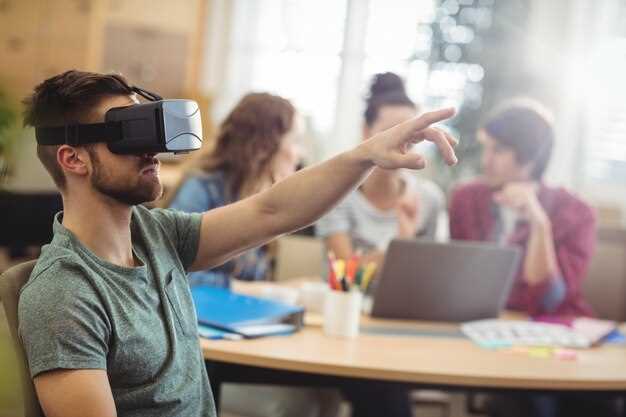
Virtual Reality: Immersive Learning In Class and the Lab
Virtual Reality: Immersive Learning In Class and the Lab
Q&A:
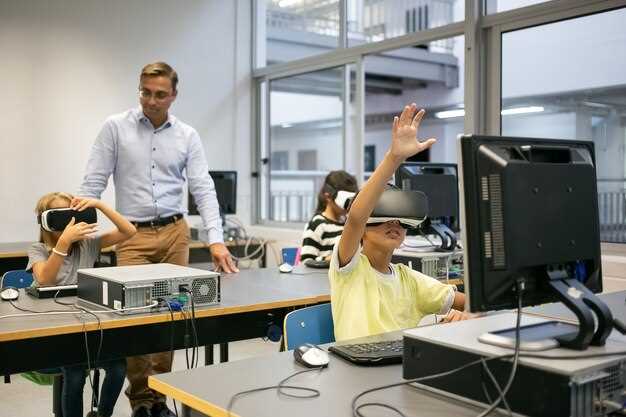
How does virtual reality training enhance the educational experience for students?
Virtual reality (VR) training provides an immersive learning environment where students can interact with content in a more engaging way than traditional methods. It allows for experiential learning, where students can practice skills and solve problems in a simulated world, enhancing understanding and retention. For example, medical students can perform virtual surgeries, gaining hands-on experience without the risk of real-world consequences. This type of training can cater to different learning styles and improve student motivation and interest in the subject matter.
Are there specific subjects or disciplines that benefit more from VR training in education?
Yes, certain subjects, especially those requiring practical application and visualization, greatly benefit from VR training. For instance, STEM fields like biology, chemistry, physics, and engineering can use VR for virtual labs and simulations, allowing students to experiment and observe phenomena that might be too dangerous, expensive, or impractical in a physical classroom. Medicine, architecture, and vocational training are also fields where VR can be incredibly beneficial, offering safe and cost-effective ways to practice skills and techniques.
What are some challenges of implementing virtual reality training in educational settings?
Implementing VR training faces several challenges, such as the cost of hardware and software, which can be prohibitive for some institutions. Technical issues, like system compatibility and maintenance, can also pose significant hurdles. Additionally, not all educators are familiar with VR technology, requiring investment in training and curriculum development. Ensuring accessibility for all students, including those with disabilities, is another critical challenge that schools must address when adopting VR technology.
How does the use of virtual reality in education differ from traditional teaching methods?
Virtual reality diverges from traditional teaching methods by offering interactive and immersive experiences, as opposed to the primarily passive consumption of information typical in lectures. In VR, students are active participants, often engaging in simulations and scenarios that mimic real-life situations. This hands-on approach helps deepen comprehension and facilitates experiential learning, which is harder to achieve in conventional classroom settings. Moreover, VR can introduce virtual environments or phenomena that might be impractical or impossible to experience in reality.
Can VR training be personalized to fit individual student needs, and how is this achieved?
Yes, VR training can be tailored to individual learning needs through customizable content and adaptive learning platforms. Educators can modify VR experiences to accommodate different learning paces, preferences, and objectives. For instance, VR can offer different difficulty levels or allow students to explore specific areas of interest in more depth. Additionally, data collected from VR interactions can be analyzed to provide insights into student progress, enabling educators to adjust the curriculum and support based on each student’s unique needs.
How does virtual reality training enhance the learning experience in education?
Virtual reality (VR) training enhances the learning experience by providing immersive environments where students can engage with the material in a hands-on manner. This approach allows learners to practice skills and apply knowledge in realistic scenarios, which can lead to better retention and understanding. VR can bridge the gap between theory and practice, making complex concepts more accessible and allowing students to explore environments that would be impossible or impractical to visit in person, such as ancient historical sites or the interior of a molecule.
What challenges might educators face when implementing virtual reality training in their curriculum?
Educators may encounter several challenges when implementing VR training. Firstly, the cost of acquiring and maintaining VR equipment can be prohibitively high for some institutions. Additionally, there may be a steep learning curve for both teachers and students who are new to VR technology. Access to sufficient technical support and ensuring that content aligns with curriculum standards are also significant considerations. There is also the challenge of addressing different learning styles and ensuring that VR activities are inclusive and accessible to all students, including those with disabilities.
